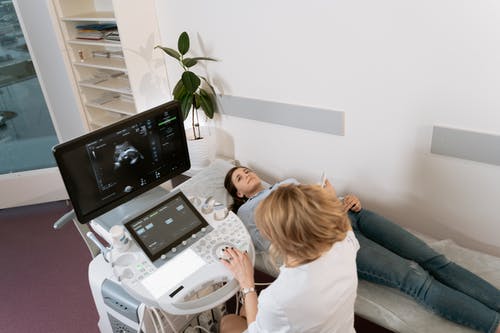Ultrasound Image Quality
Quality ultrasound images are essential for accurate diagnosis and treatment planning in medical diagnosis. Healthcare providers play a key role in ensuring optimal image quality for ultrasound examinations. In this article, we provide healthcare providers with tips to improve ultrasound image quality and diagnostic accuracy.

Optimizing Transducer Selection
Selecting the appropriate transducer for each imaging scenario is essential to achieving optimal image quality. When choosing a sensor, healthcare providers should consider, among other things, the patient’s anatomy, the depth of imaging, and the desired field of view. High-frequency transducers provide better resolution for surface structures, while low-frequency transducers penetrate deeper tissues.
Patient Preparation and Positioning
Proper patient preparation and positioning are essential to obtaining a high-quality ultrasound image. Healthcare providers must ensure that patients are properly positioned and comfortable during examinations to minimize movement artifacts. Clear communication with patients and instructions to hold their breath or adjust their position can help optimize image acquisition.
Adjusting image parameters
Understanding and adjusting image parameters such as gain, depth, and focus is key to optimizing image quality. Healthcare providers must fine-tune imaging parameters based on the specific imaging scenario and patient anatomy to achieve the desired image clarity and contrast. Gradual adjustments and real-time image optimization techniques can help effectively optimize image parameters.
Understanding and Minimizing Artifacts
Identifying and minimizing ultrasound artifacts is essential to improving image clarity and diagnostic accuracy. Common artifacts such as acoustic shadowing, reverberation, and speckle noise can obscure anatomical structures and cause misinterpretation. Healthcare providers should be familiar with artifact detection techniques and adjust imaging parameters to minimize the presence of artifacts while optimizing image quality.
Doppler Image Enhancement
Optimizing Doppler imaging settings is essential for accurate assessment of blood flow and vascular dynamics. Healthcare providers should adjust Doppler gain, scale and angle settings to maximize sensitivity and minimize noise. Techniques such as color Doppler optimization and spectral waveform analysis can improve the Doppler image quality and diagnostic accuracy.
Using advanced imaging modes
Using advanced imaging modes such as harmonic imaging and tissue Doppler techniques can improve the diagnostic capabilities of ultrasound imaging. Healthcare providers should familiarize themselves with the features and benefits of advanced imaging devices and use them appropriately to visualize tissue characteristics and blood flow dynamics.
Equipment and Transducer Hygienic Maintenance
Regular equipment maintenance and transducer hygiene are essential to Optima ultrasound. performance and image quality. Healthcare providers should follow the manufacturer’s recommendations for cleaning and disinfecting ultrasound equipment to prevent contamination and ensure patient safety. Regular equipment calibrations and quality control are also important to maintain imaging consistency and accuracy.
Continuing education
Continuing education and training are very important for healthcare providers to stay up-to-date on best practices and advances in ultrasound imaging. Attending ultrasound workshops, participating in proficiency programs, and seeking mentoring opportunities can improve skills and enhance diagnostic expertise. Ongoing training ensures that healthcare providers provide quality ultrasound and improve patient outcomes.
Conclusion
Conclusion: Improving the quality of ultrasound is essential for accurate diagnosis and treatment planning in medical diagnosis. By implementing the tips provided, healthcare providers can optimize ultrasound practices and improve diagnostic accuracy.
By prioritizing patient preparation, adjusting imaging parameters, minimizing artifacts, and using advanced imaging techniques, healthcare providers can improve ultrasound image quality and provide better patient care.


